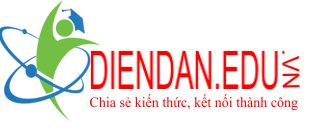Difference between Quality Control and Quality Assurance?
|
Quality Control
|
Quality Assurance
|
|
|
Definition
|
QC is about checking at the end of some development process (e.g. – a design activity) that we have built quality in i.e. that we have achieved the required quality with our methods.
|
QA is about having an overall development and management process that provides right environment for ensuring quality of final product.
|
|
Description
|
QC is like testing a module against requirement specification or design document, measuring response time, throughput etc.
|
QA gives us added assurance that the whole producing or checking process is properly planned and executed and thus maintaining high quality.
|
|
What it does
|
To check that the modern methods of software development are largely designed to ensure right quality is achieved. QC checks that these methods are in place and to discover where they are not then corrections are to be made.
|
It gives us added assurance that the while producing / checking process is being properly planned and executed and hence is keeping high our chances of producing software of required quality.
|
|
Stages
|
Define features and levels Define feature check procedure Carrying out the check procedure Record the result take and record any corrective action taken.
|
1. Determination of quality policy through Quality Management System 2. Checking that predetermined Quality control activities are being properly taken care off.
|
|
Best carried out on
|
QC is best carried out on products
|
QA is best carried out on process.
|
|
Phase of implementation
|
QC should take place at every stage of SDLC.
|
QA should be done at end of every SDLC i.e. when product building is complete.
|
|
Technique
|
Structured walkthrough, Fagan Techniques are some of QC techniques.
|
Quality policy defined and generally implemented in the form of Quality Management System is used to carry out QA.
|
Khác nhau giữa QA và QC:
As we all know the major difference between the two is that Quality Assurance is an overall development and management process whilst Quality Control is product oriented and comes as part of the overall Quality Assurance package on offer to the customer. The processes should be fully documented and auditable at any stage by both the business and customer and this helps to have overall control of each phase of the project such as manufacturing, purchasing, packaging and installation.
This in turn helps to identify weaknesses and strengths in the process and product alike.
The two need to work hand in hand in as much as If Quality Control is there and Quality Assurance is not up to the required standards then, there would be lots of rejections by the customer adding up to rejection of product, material and manpower wastage and non-compliance.
If Quality Assurance is there and Quality Control is missing, then any non-conformity due to process fault, breakdown or any other abnormality could go to market and could result in product recalls which will not only annoy the consumer but result in financial loss to both customer and the company and can of course lead to loss of business.
Quality Assurance: QA is part of the quality management system focussed on providing confidence that quality requirements will be fulfilled and is aimed at the predicting and preventing the error before it’s occurrence and covers the overall package. It’s a set of activities designed to ensure that the development and/or maintenance process will meet its objectives and it ensures that the right process or step is followed by the right people. This is in turn builds quality into the process, product and people involved.
It can be carried out at the point of production, completion or inspection by client and It’s used to identify and control the defects in products or process both present and in the future. Quality assurance defines the quality policy and in turn, how to follow the policies in better way to avoid any issues/defects thus saving time effort and money in the production of product but also providing the customer with exactly what they require.
It would also be obvious to state that Quality Assurance has some basis in customer requirements and will ensure that control is maintained at any stage of the build and development of the product and product quality is maintained. This could be overseen by the Quality Assurance Engineering department.
A Quality Assurance Engineer takes the preventive actions to eliminate the defects in the product and may well be involved in developing and provision of packaging & shipping requirement s to ensure the finished products arrive in good order.
Quality Control: The dictionary would define this as a process for meeting the established goals by evaluating and comparing actual performance and planned performance, and taking action on the difference. It’s aimed at a process, looking at it’s inspection criteria, rejection criteria & acceptance criteria and taking the required steps to improve the passing quantity.
Most importantly when a company has to inspect incoming components, parts or sub assemblies from outside vendors which are to be used in the production process. Quality controls and strictly documented specifications will allow you to spot where problems may arise, and a testing programme would have to be carried out to ensure the quality issues are eliminated. Using appropriate sampling plan as and when required available tools or as specified in the quality manual standards. Principles of Quality control will also be employed where in-process inspection is carried out on semi-finished products or subassemblies during manufacturing to check conformity to requirements for further assembly and processing.
Quality Assurance will come into play on end products and has to be assured before the end product leaves the site en route to the costumer. Conformity to customer specifications will be strongly measured and documented, parametric and life tests will be carried out on selected samples, if necessary the end product will be sent for re-work or scrap yard. Quality control and Quality Assurance are both necessary in a manufacturing firm to ensure strict conformity to requirements
It’s a series of observation techniques and activities used by the business to fulfil quality requirements and to discover and segregate non conforming material.
As we have already identified, Quality Control is part of the Quality management system, focussed on fulfilling quality requirements and is only a part of the overall Quality assurance package. It’s about checking at the end of a development process (e.g. – a design activity) that we have built quality into the products and we have achieved this through our methods.
It also refers to quality related activities associated with the creation of project deliverables. Quality control is used to verify that deliverables are of acceptable quality and that they are complete and correct.
We can view it as a correction process mainly detecting the error after its occurrence and therefore, If a product is made with non conformity, quality control would have the ability to reject it.
A Quality Control Engineer would monitor and find defects in a product and ensure that all requirements of the quality plan are met by the product during manufacturing and he or she would be focussed on making sure product meets the requirements of quality plan set out by Quality Assurance and the Quality Management System.
Control of the production process is therefore much more effective and could be seen to be more important than the control of the final product as you are better and more quickly able to identify where quality or product issues are and can be addressed during every task or operation.
Quality control, can be described as “a process for meeting the established goals by evaluating and comparing actual performance and planned performance, and taking action on the difference”
Quality control process steps:
1. Choose control subject
2. Establish Measurement
3. Establish standards of Performance
4. Measure Actual Performance
5. Compare to Standards (interpret the difference)
6. Take action on the difference
Quality control process steps:
1. Choose control subject
2. Establish Measurement
3. Establish standards of Performance
4. Measure Actual Performance
5. Compare to Standards (interpret the difference)
6. Take action on the difference
The five QA/QC elements
QA programs generally address five QA/QC elements, namely:
1. Accuracy -the degree of agreement of a measurement with an accepted reference or true value.
2. Precision – a measure of the mutual agreement among individual measurements of the property, usually under prescribed similar conditions.
3. Completeness – a measure of the amount of valid data obtained from a measurement system compared to the amount that was expected to be obtained under correct normal conditions.
4. Representativeness -the degree to which data accurately and precisely represent a characteristic of a population or parameter variations at a sampling point, a process condition, or an environmental condition.
5. Comparability -the confidence with which one data set may be compared to another.
As per ISO 9000:
Quality Control means – The Operational Techique and activities that are used to fullfill requirements of Quality,
Quality Assurance means – All Those planned and systematic activites implemented already , to provide adequate confidence that an entity will fulfillrequirements of Quality.
The following table can explain in detail:
QC QA
Product Process
Reactive Pro-active
Line Function Staff Function
Find the defects Prevent the defects
e.g.
QC QA
Walkthrough Quality Audit
Testing Defining Process
Inspection Selection of tools
Checkpoint Review Trainings

DienDan.Edu.Vn Cám ơn bạn đã quan tâm và rất vui vì bài viết đã đem lại thông tin hữu ích cho bạn.DienDan.Edu.Vn! là một website với tiêu chí chia sẻ thông tin,... Bạn có thể nhận xét, bổ sung hay yêu cầu hướng dẫn liên quan đến bài viết. Vậy nên đề nghị các bạn cũng không quảng cáo trong comment này ngoại trừ trong chính phần tên của bạn.Cám ơn.




![[Share Theme WordPress] JNews – WordPress Newspaper Magazine Blog AMP Theme V5.5.0 Mới Nhất](https://diendan.edu.vn/wp-content/uploads/2019/11/JNews-2B-2BWordPress-2BNewspaper-2BMagazine-2BBlog-2BAMP-2BTheme-100x100.jpg)



